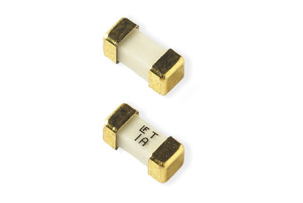Analysis of Fuse Safety Regulations: Core Guidelines for Guarding Circuit Safety
1、 Definition and significance of fuse safety regulations
Fuse Safety Regulations refer to mandatory technical specifications and testing standards established to ensure the safe and reliable operation of fuses in circuit protection. It runs through every aspect of the design, manufacturing, selection, and application of fuses, with the core goal of preventing electrical fires, equipment damage, and personal injury. When the circuit is overloaded or short circuited, the fuse needs to be precisely blown to cut off the fault current, and the safety rules provide scientific basis and quality assurance for this process.

2、 Core requirements of fuse safety regulations
Matching of rated parameters
The safety regulations for fuses strictly stipulate that their rated current, voltage, and breaking capacity must match the load characteristics of the circuit. For example, the rated current should be higher than the normal operating current of the equipment, but lower than the safe current carrying capacity of the wire, to ensure that the fuse is blown first in case of abnormalities.
Material and structural reliability
The melt material of fuses (such as silver and copper alloys) should have stable electrical resistivity and oxidation resistance, and the shell material should be flame retardant and heat-resistant. Safety regulations require verification of its structural stability through high and low temperature cycling tests and durability tests.
Breaking performance and safety
In a short circuit fault, the fuse must instantly cut off currents of up to several thousand amperes while avoiding arc splashing or shell bursting. The safety regulations assess its breaking ability and failure modes through standards such as UL 248 and IEC 60127.
Certification and Compliance
The mainstream market requires fuses to pass regional safety certification, such as UL in North America, CE in the European Union, and CCC in China. Certification covers design review, sample testing, and production consistency verification to ensure product compliance throughout the entire lifecycle.
3、 Comparison of International Safety Standard Systems
UL standard (USA): focuses on fire risk prevention and requires fuses to have no open flames or molten droplets under extreme current.
IEC standard (international): emphasizes precise classification of breaking capacity and time current characteristics, suitable for different circuit scenarios.
GB standard (China): On the basis of compatibility with IEC, local testing items such as humid and hot environment and mechanical strength are added.
4、 Key points of application practice of fuse safety regulations
Selection and adaptation: Select the corresponding safety certified model based on the working environment of the equipment (such as temperature and vibration) to avoid "small horses pulling big cars" or redundant design.
Installation specifications: The fuse holder must meet insulation and heat dissipation requirements, and parallel use or replacement of higher rated products is prohibited.
Regular maintenance: Regularly check the aging condition of fuses according to safety regulations and replace oxidized or fatigued components in a timely manner.
Fuse safety regulations are the "invisible line of defense" for electrical safety, ensuring their protective function at critical moments through scientific standards and rigorous testing. Both manufacturers and users need to deeply understand the connotation of safety regulations, practice norms from the design end to the application end, and jointly build a strong circuit safety barrier.
